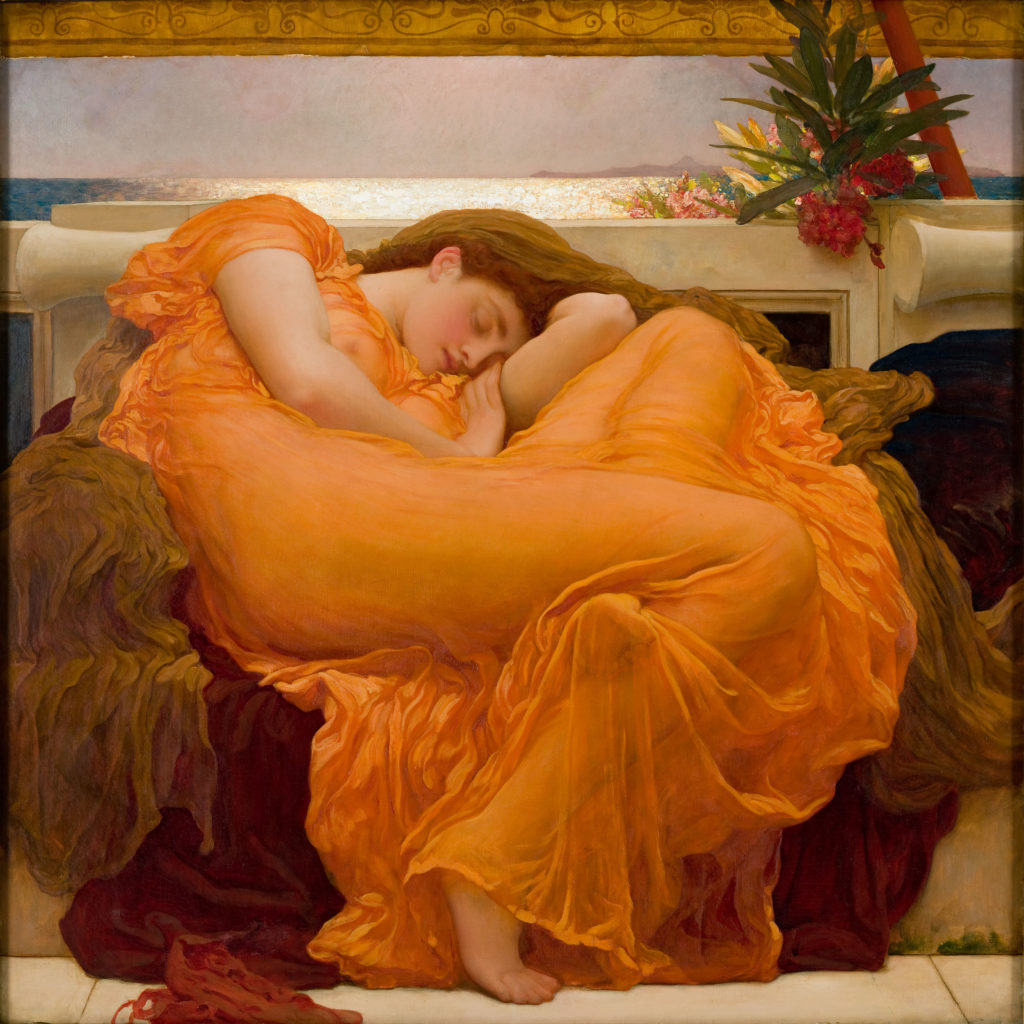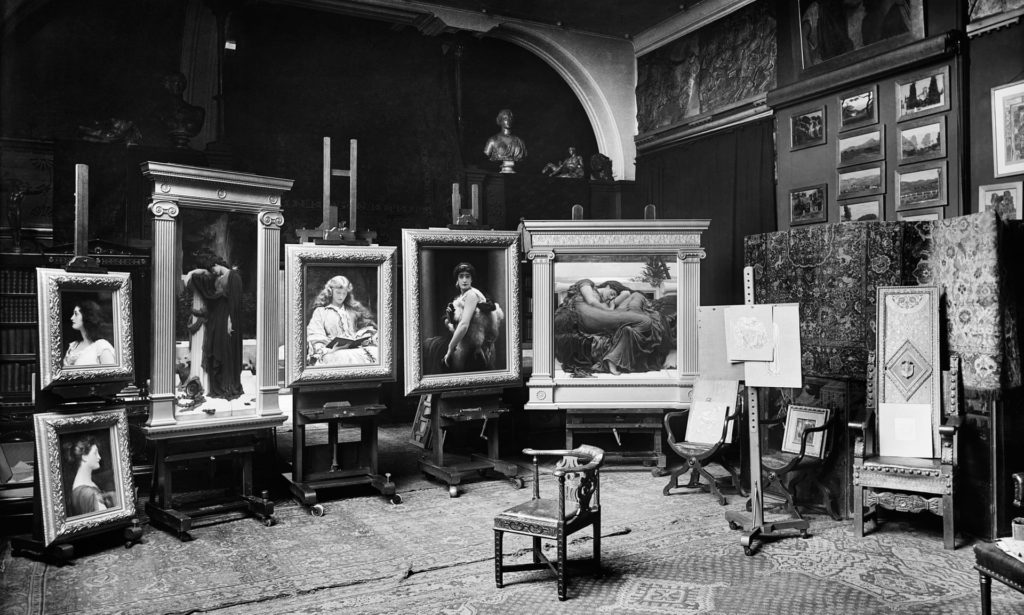Masterpiece Story: Portrait of Madeleine by Marie-Guillemine Benoist
What is the message behind Marie-Guillemine Benoist’s Portrait of Madeleine? The history and tradition behind this 1800 painting might explain...
Jimena Escoto 16 February 2025
20 October 2024 min Read
We have prepared a story about this truly warm painting that can leave you in flames… Ladies and Gentlemen, Flaming June by Sir Frederic Leighton! It is a Victorian study of summer heat and laziness, or as some may say, a study of an overwhelming orange drapery…
Frederic Leighton was one of the most renowned artists of the Victorian era and longtime president of the Royal Academy. He was born in Scarborough, UK, in 1830, but from 1840 lived with his family in continental Europe. Leighton’s artistic education was thoroughly European: He studied in Berlin, Florence, and Frankfurt and lived for a few years in Paris. By 1860 he had returned to the UK to live in London. He associated with the Pre-Raphaelites, but their relationship was a complicated one. Leighton was opposed to their detailed realism but shared their attitude regarding nature and poetic idealism. In his own words:
I am hand-in-glove with all my enemies the Pre-Raphaelites.

The woman in this painting enjoys a nap on a terrace during a hot summer day. Her pose is definitely more decorative than comfortable (one of the accusations leveled by critics at the painting). It was inspired by Michelangelo’s Night adorning the grave of Giuliano de Medici in Florence. The dress, the woman’s shawl and her hair all merge into one swirling wave of orange and earth shades, the warmth of the color is oozing from the frame. Her face is calm, but also flushed, her cheek marked by the hot sun she must have spent time in earlier. Her form fills nearly the entire canvas, calm and motionless, exhausted by the heat, framed by the drapery.

Only above her do we get a glimpse of the landscape she must have been enjoying earlier. The sea shines like liquid metal, blinding us with the reflected sunlight, the ultimate proof of midsummer. But is the painting really so full of relaxing peace? The plant in the top right corner is poisonous oleander, hinting at the affinity of sleep and death.

The painting has an interesting history. It was one of the several ones Leighton submitted for the Royal Academy exhibition in the year before his death. Before the official exhibition, he organized a small viewing of the paintings in his studio, attended by members of the royal family. After being on loan to the Ashmolean in Oxford in the early 1900s, the painting vanished for decades, only to be rediscovered in the early 1960s, boxed in over a chimney in a house in Battersea. Andrew Lloyd Webber saw it soon after in a shop on Kings Road, but his grandmother refused to lend him £50 to buy it, famously saying: “I will not have Victorian junk in my flat.”
It was auctioned shortly after but failed to achieve the low reserve price. After the auction, it was quickly purchased by Museo de Arte de Ponce in Ponce, Puerto Rico, its current residence. In 2016, Leighton House Museum hosted an exhibition recreating Leighton’s final submission to the Royal Academy exhibition, bringing almost all of the paintings together into the studio where they were created. Flaming June was definitely the star of the show, returning to its original home for the first time since 1895.

DailyArt Magazine needs your support. Every contribution, however big or small, is very valuable for our future. Thanks to it, we will be able to sustain and grow the Magazine. Thank you for your help!